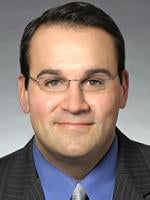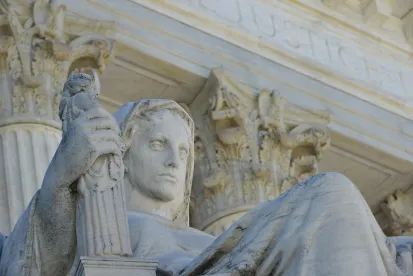On June 13, the US Supreme Court handed down an important unanimous decision relaxing the standard for an award of enhanced patent damages under 35 U.S.C. § 284. See Halo Electronics, Inc. v. Pulse Electronics, Inc., 579 U.S. ___ (June 13, 2016) (hereinafter cited as "Slip Op. at ___"). The Court eliminated the "rigid" Federal Circuit test that was previously used and replaced it with a more flexible standard that gives district courts broad discretion to award enhanced damages in "egregious cases of misconduct beyond typical infringement." Slip Op. at 15. The Court re-focused the § 284 analysis on the subjective intent of the alleged infringer at the time of infringement and eliminated the showing of "objective recklessness" as formerly required by the Federal Circuit.
Enhanced Damages Under the Federal Circuit's Seagate Decision
Under previous Federal Circuit precedent, enhanced damages were reserved for "willful" infringement. See In re Seagate Technology, LLC, 497 F. 3d 1360 (Fed. Cir. 2007) (en banc). To be allowed enhanced damages, patent owners had to pass a two-part test with both objective and subjective recklessness components. First, the patent owner had to "show by clear and convincing evidence that the infringer acted despite an objectively high likelihood that its actions constituted infringement of a valid patent," without regard to "[t]he state of mind of the accused infringer." Id. at 1371. Second, the patent owner had to demonstrate by clear and convincing evidence that the risk of infringement "was either known or so obvious that it should have been known to the accused infringer." Id. The Federal Circuit reviewed district court decisions awarding enhanced damages under a three-part standard where a district court's determination of "objective recklessness" was reviewed de novo, its findings on "subjective knowledge" for substantial evidence, and the ultimate determination of willfulness for abuse of discretion.
Supreme Court Returns Enhanced Damages Decision Making to District Courts
The Supreme Court acknowledged that the "Seagate test reflects, in many respects, a sound recognition that enhanced damages are generally appropriate under § 284 only in egregious cases." Slip Op. at 9. But it also found the Seagate test was "unduly rigid, and it impermissibly encumbers the statutory grant of discretion to district courts." Id. (quoting Octane Fitness, LLC v. ICON Health & Fitness Inc., 572 U. S., at ___ (slip op., at 7)). The Supreme Court took particular issue that Seagate required a finding of objective recklessness in every case. Slip Op. at 9-11. The Court noted that the "objective reckless" requirement can have the effect of "insulating some of the worst patent infringers from any liability for enhanced damages" simply because an attorney can fashion a reasonable defense at trial. See id. at 9. In other words, under Seagate, infringers who deliberately duplicated a patented product while knowing they were likely infringing a valid patent could avoid an award of triple damages by coming across a reasonable defense at a later time (e.g. during litigation).
Similar to its attorneys' fees decision in Octane Fitness, 572 U. S. at ___ (slip op. at 8), the Court disposed of the Federal Circuit's "rigid" test. See Slip Op. at 15. Instead, it left the district courts with a more flexible standard focusing on the subjective intentions of the infringer. The decision also clarified that the patentee's burden of proof for enhanced damages is a preponderance of the evidence standard (i.e., "more likely than not") rather than the heightened "clear and convincing evidence" standard previously used by the Federal Circuit. Slip Op. at 12. The Supreme Court effectively re-empowers the district courts by holding that all aspects of a district court's enhanced damages decision are to be reviewed only for an abuse of discretion. Id. at 12-13. This deferential standard recognizes that district courts have significant discretion in determining whether enhanced damages are warranted. However, the Court made it clear that its decision should not open the floodgates and result in enhanced damages awarded in every patent case where infringement is found. Rather, enhanced damages are reserved for that "misconduct beyond typical infringement." Slip Op. at 15.
The District Courts Are Tasked to Define the Contours of the New Standard
Although the Supreme Court did not establish a new bright line test for enhanced damages, it did not leave lower courts without any guidance. The Court cautioned that the district court's discretion must "be guided by sound legal principles" and "the longstanding considerations we have identified [in the Court's previous cases] as having guided both Congress and the courts." Id. at 8, 13 (internal quotations omitted). The Court explained that "[a]wards of enhanced damages . . . over the past 180 years establish that they are not to be meted out in the typical infringement case, but are instead designed as a 'punitive' or 'vindictive' sanction for egregious infringement behavior." Id. at 8. The Court has previously called such egregious behavior "willful, wanton, malicious, bad-faith, deliberate, consciously wrongful, flagrant, or—indeed—characteristic of a pirate." Id. In the end, though, the Court made clear that "none of this is to say that enhanced damages must follow a finding of egregious misconduct." Id. at 11. As reflected in the concurring opinion of three justices, it is the circumstances "that transform[] simple knowledge into such egregious behavior." 579 U.S. ___ , ___ (2016) (Breyer, J., concurring) (slip op. at 1). Thus, "courts should continue to take into account the particular circumstances of each case in deciding whether to award damages, and in what amount." Slip Op.at 11.
As patentees and accused infringers alike look to the courts for guidance on what conduct warrants enhanced damages, the consolidated cases remanded by the Court are prime grounds for direction. In the Stryker decision, the Federal Circuit affirmed infringement, but vacated the enhanced damages because "reasonable defenses" were asserted at trial, despite testimony indicating that the alleged infringer "all-but instructed its design team to copy [the patentee's] products." Slip Op. at 7 (internal quotations omitted). Similarly, the Federal Circuit in the Halo decision found that the defendant presented a defense at trial that was "not objectively baseless." Id. at 6 (internal quotations omitted). However, unlike in Stryker, after receiving notice of the patents, the defendant's engineer had actually reviewed the patents and concluded they were invalid. Id. This raises the question of what level of diligence may clear a defendant of enhanced damages. Future decisions applying the Supreme Court's guidance will define the contours of the new standard for enhanced damages.
Conclusion
The Court's decision affects patentees and alleged infringers alike, easing the requirements for recovering enhanced damages for patentees while forcing accused infringers to carefully consider the steps necessary to investigate patents of which they are on notice. In light of this decision, patent owners and alleged infringers should reassess the possibility of enhanced damages, with key consideration given to the subjective intent of the alleged infringer at the time of infringement. This focus on the subjective intentions of the alleged infringer in deciding whether to award enhanced damages highlights the importance of obtaining competent opinions of counsel regarding non-infringement or invalidity. As explained in the concurring opinion, "Congress has thus left it to the potential infringer to decide whether to consult counsel—without the threat of treble damages influencing that decision." 579 U.S., at ___ (Breyer, J., concurring) (slip op. at 3). Nonetheless, an accused infringer should carefully consider their circumstances and determine whether an opinion of counsel could tip the scales of the subjective inquiry. This is particularly true, given that the district court determination of enhanced damages is more flexible and will be reviewed under a standard that is less likely to lead to reversal than before. In other words, presenting your best evidence in the best manner to the district court becomes even more important as the Federal Circuit must find an abuse of discretion to reverse a district court's determination.





 />i
/>i

